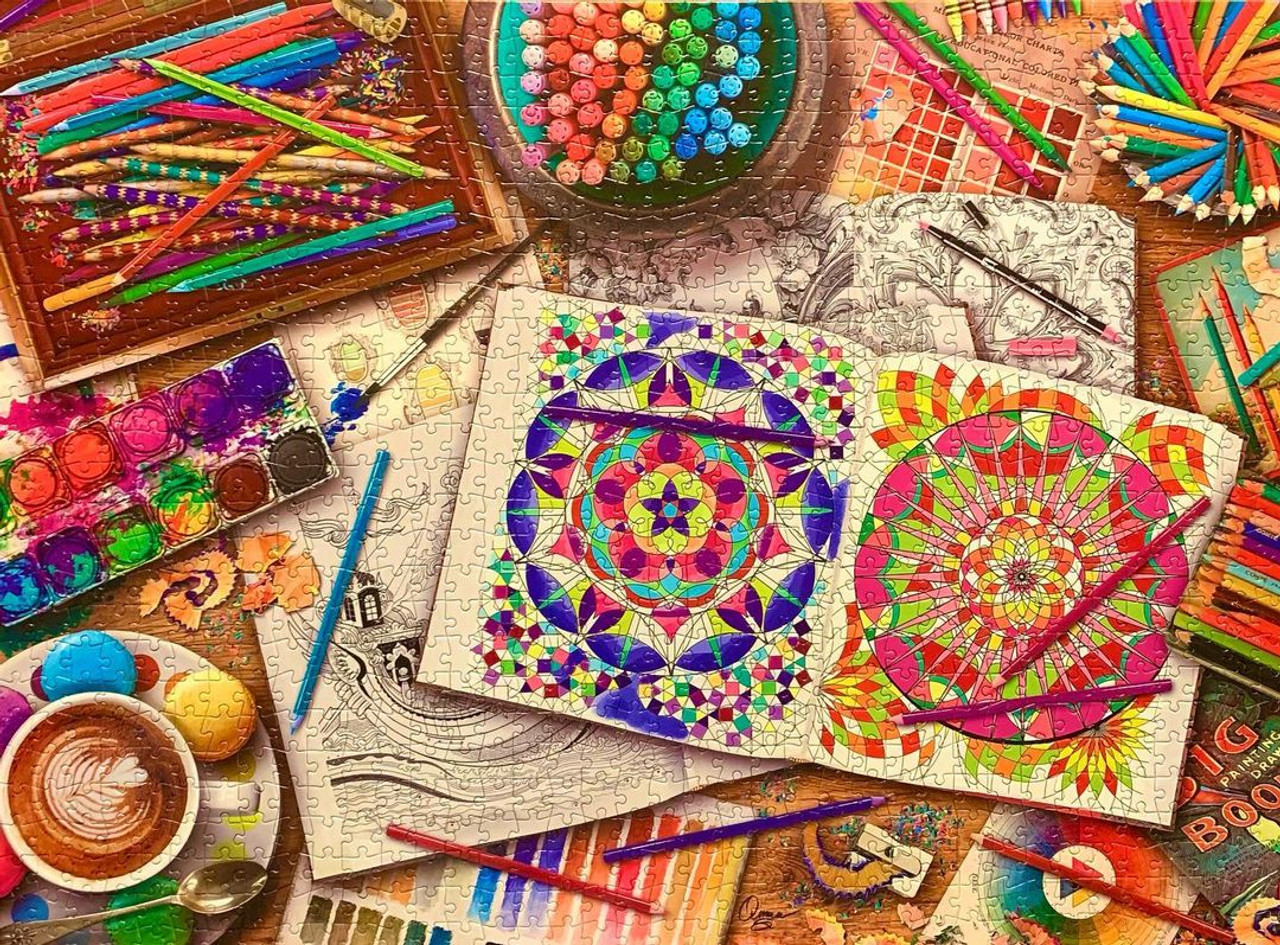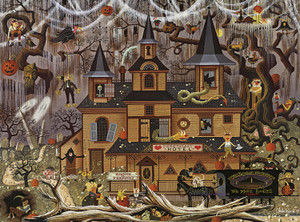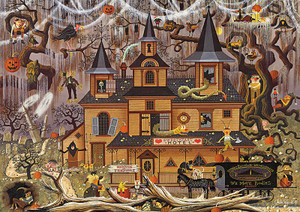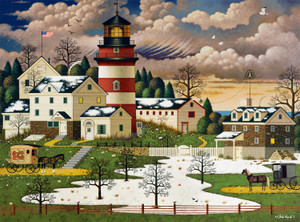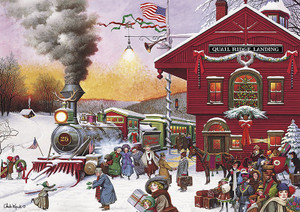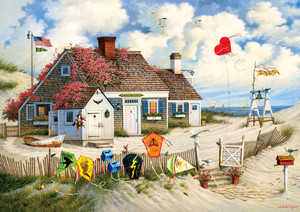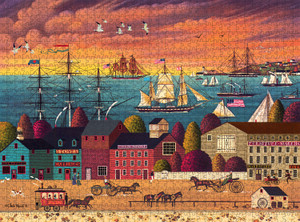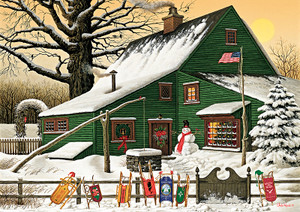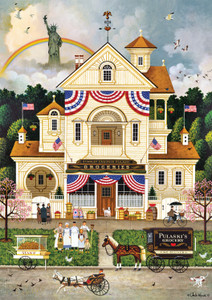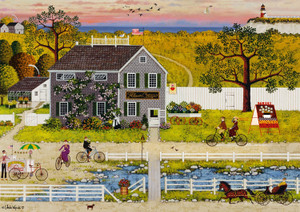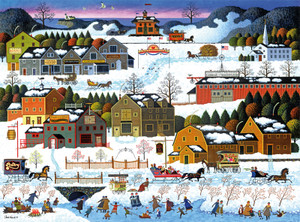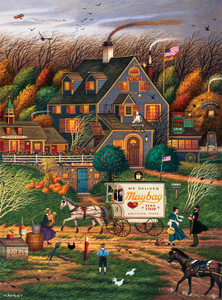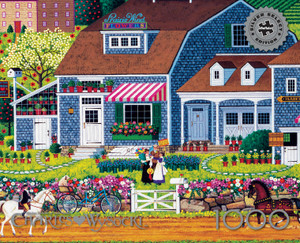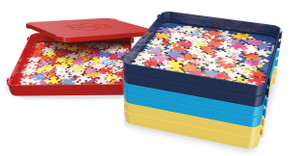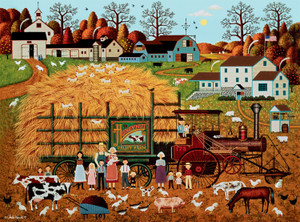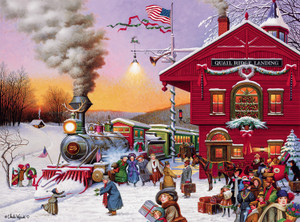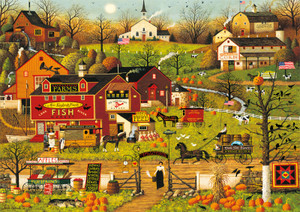Posted by Buffalo Games on Aug 2nd 2022
What Makes a Jigsaw Puzzle Difficult?
Okay, math nerds. Get your calculators out because what makes jigsaw puzzles difficult has a lot to do with statistics and other calculations.
But that’s not all. For all of the science that goes into it, there’s an awful lot of art too. You don’t have to take on a 2000-piece puzzle for it to be difficult. Sometimes it’s all about how the pieces line up or the fact that the image you’re solving is especially difficult.
What makes jigsaw puzzles difficult? Read on to find out.
2000 Piece Puzzles and More
When you’re browsing the aisles in the puzzles store, piece count is often the go-to measure for how difficult a given puzzle may be.
This standard exists because of probability calculations that, frankly, we would rather not get into here. And there’s a really good reason for that. The main reason is that we would rather watch paint dry. Nevertheless, we’ll give you the basic lowdown.
Let’s say you’re working on one of those 100-piece puzzles you’d buy for the grandkids as a stocking stuffer or whatnot. We’ll assign the value of X difficulty to that puzzle. If you were to double the piece count to 200, the difficulty would be quadrupled to 4X.
Therefore, if you double the piece count again to 400, the difficulty would rise to 8X. This means that for a 3000-piece puzzle, relative to a 100-piece puzzle, the difficulty is greater than 24X. Because we’ve effectively doubled the piece count six times, we must quadruple the difficulty six times as well, and 4 x 6 is 24.
This math means that if a man on a bus departs New York at 6:00 a.m. and the bus travels at 55 mph for 3.24 hours, he will obviously order a tuna on rye for lunch. It also means he will easily be able to solve one of those 100-piece puzzles before the next bus leaves for Niagara. But you knew that.
Designs for Days
Coming in a close second to piece count is design, at least when it comes to scoring difficulty. There is no way to quantify how difficult a design is, but suffice it to say that if you select a 2000-piece puzzle with a difficult design to boot, it’s not going to be easy to solve. The most difficult puzzles do have certain features, however:
- Repeating patterns
- Monochromatic color schemes
- Designs within designs
Repeating patterns can probably best be described by harking back to those posters that were popular in the nineties that, if you stared at them long enough, seemed to morph into three-dimensional portals revealing hidden images within.
But if you just casually glanced at them, they appeared to hold nothing but noise, a meaningless repeating pattern. Many of the hardest jigsaw puzzles for adults use this technique to add the spice of challenge to the mix.
Monochromatic color schemes make things difficult too. There are a few jigsaw puzzles out there that are impossible to sort because every piece is the same color. Therefore, it’s all trial and error, but mostly error.
Then there are those jigsaw puzzles that have patterns within patterns. This recursion can be accomplished with the printed design as well as with the physical puzzle piece cuts. For instance, a puzzle that’s in the overall shape of a rectangle may feature a circle within that shape, and the pieces are cut correspondingly. Now that’s a challenge.
Over the Edge and onto the Back Side
What really makes a jigsaw puzzle challenging is when it lacks any discernible border. That is, instead of cutting edge pieces with a straight side, the puzzle maker simply produces all of the edge pieces with tabs and blanks on the sides that would normally feature a straight edge.
This design means that, as you construct your solution, you won’t know where the edges are until you’re pretty far along in the process.
Then there’s the added difficulty of double-sided puzzles. Some manufacturers give you the ability to cheat by finishing one side in gloss and the other in matte, but some don’t. Sorting through these possibilities at least doubles the difficulty, if not making it rise exponentially.
Random Oddities
You can find all kinds of multi-thousand-piece puzzles out there that take the piece counts up into the tens of thousands if you really want to go there. We recommend that you plan on not parking in the garage for at least a year if you get something like a 30,000-piece puzzle.
There are jigsaw puzzles for adults that look like an enormous crossword, or sudoku, from a distance as well. If you’re crazy enough to try it, somebody has thought of it. Some of the offerings out there make us wonder about the line between fun and torture, but we’re sure it’s located in a different place for everyone.
And let’s be honest; sometimes, the reason you’re even shopping for one of these ultra-difficult jigsaw puzzles is that you fully intend to unleash it on someone you love as a gift. We agree; this is what family is for. Good old Granddad always loved it when we’d give him challenging jigsaw puzzles, whether around the holidays or for his birthday.
We always found it odd that his way of saying thanks involved so much muttering under his breath. But Granddad was funny like that.
The Most Challenging Jigsaw Puzzles for Adults
You could decide to take on a puzzle that features the Mona Lisa. You could go for one that features a repeating pattern of penguins or dalmatians. Whichever you choose, just know that it won’t be easy to see it through to the end.
However many pieces your jigsaw puzzles have, and whatever design you pick, remember to keep calm and begin with sorting, whether that’s by color (if that’s even an option), size, shape, or field and edge.
As for us, we’ll begin by brewing a fresh pot of coffee, thanks very much, and then we’ll calmly get to work, maybe with a nice relaxing audiobook playing in the background. That 2000-piece puzzle won’t solve itself. And that’s just fine with us.
